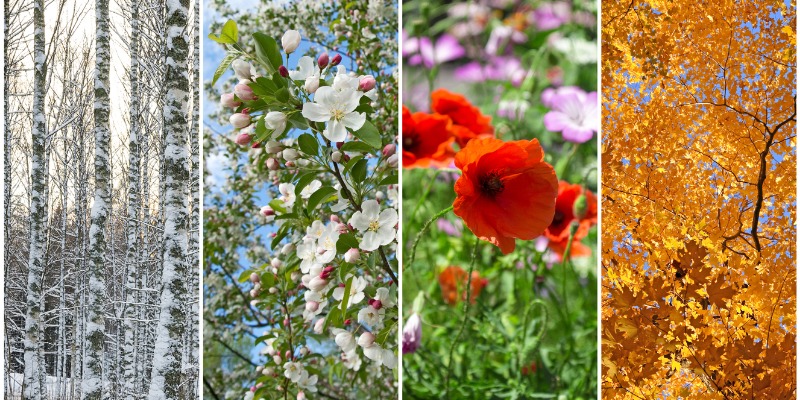
Over the course of the year, your indoor air quality can go through some noticeable changes. That’s why people that live in climates with four distinct seasons can’t just have a blanket strategy that works throughout the entire year. It’s necessary to consider the weather patterns and seasonal changes to know what to expect and just how to deal with it.
Importance of Indoor Air Quality
Keeping the air inside your home clean and fresh will help prevent a lot of different issues. There are many different causes of poor quality indoor air, and a range of different health effects that can come up, depending on the time of year and contaminants. These include:
- Headaches
- Eye, nose and throat irritation
- Breathing issues
- Allergies
- Fatigue
Winter
Winter weather is usually much drier than at other times of the year, as the cold prevents mold spore growth and humidity is low. This can lead to dried out mucous membranes and the spread of respiratory infections. Adding a humidifier to your home in the winter will raise the humidity level to a respectable level and enable you to avoid many of the issues caused by dry air. A portable humidifier can help to combat dry air in a single room, but a whole-house humidification system will keep the level consistent throughout the whole house.
Spring
As the spring arrives and settles in, humidity levels rise and with windows and doors more likely to be open, contaminants like dust, mold and pollen can get inside. The added moisture in the air might help with infections, but allergies can increase due to extra moisture in the air. Make sure to change the filter in your furnace when it needs it, and consider adding an air purification system to get rid of airborne contaminants. Regular housekeeping will help keep surfaces free of dust and pollen so they aren’t stirred up as easily.
Summer
In the summer, there is a reduction in pollen, but the temperature is typically at its highest and the accompanying humidity can result in mold troubles if you aren’t proactive. As with your furnace in the winter, changing your AC filter is a good idea to ensure dusty air isn’t blown through your ducts. You also may want to consider getting a dehumidifier if the air is too thick inside and causing problems for people’s breathing.
Fall
The fall can be a bit of everything, as it starts off with the residual heat of summer and ends with temperatures near the freezing mark. In fall, the prevalence of outdoor mold is high as there is moisture in the air and vegetation begins to decay. Certain plants also produce pollen in the fall, so there can be a range of effects depending on where you live and any particular issues you may have. The last thing you want is for outdoor mold growth to be replicated inside, so ensuring your home has adequate ventilation is crucial.
It’s also a good idea to have maintenance performed on your HVAC equipment at the appropriate times during the year. This will ensure your filters are clean and there are no small issues that could make your indoor air quality even worse.
Keeping your home comfortable all year long is our number one priority. Contact us today to learn about your home comfort solutions.









